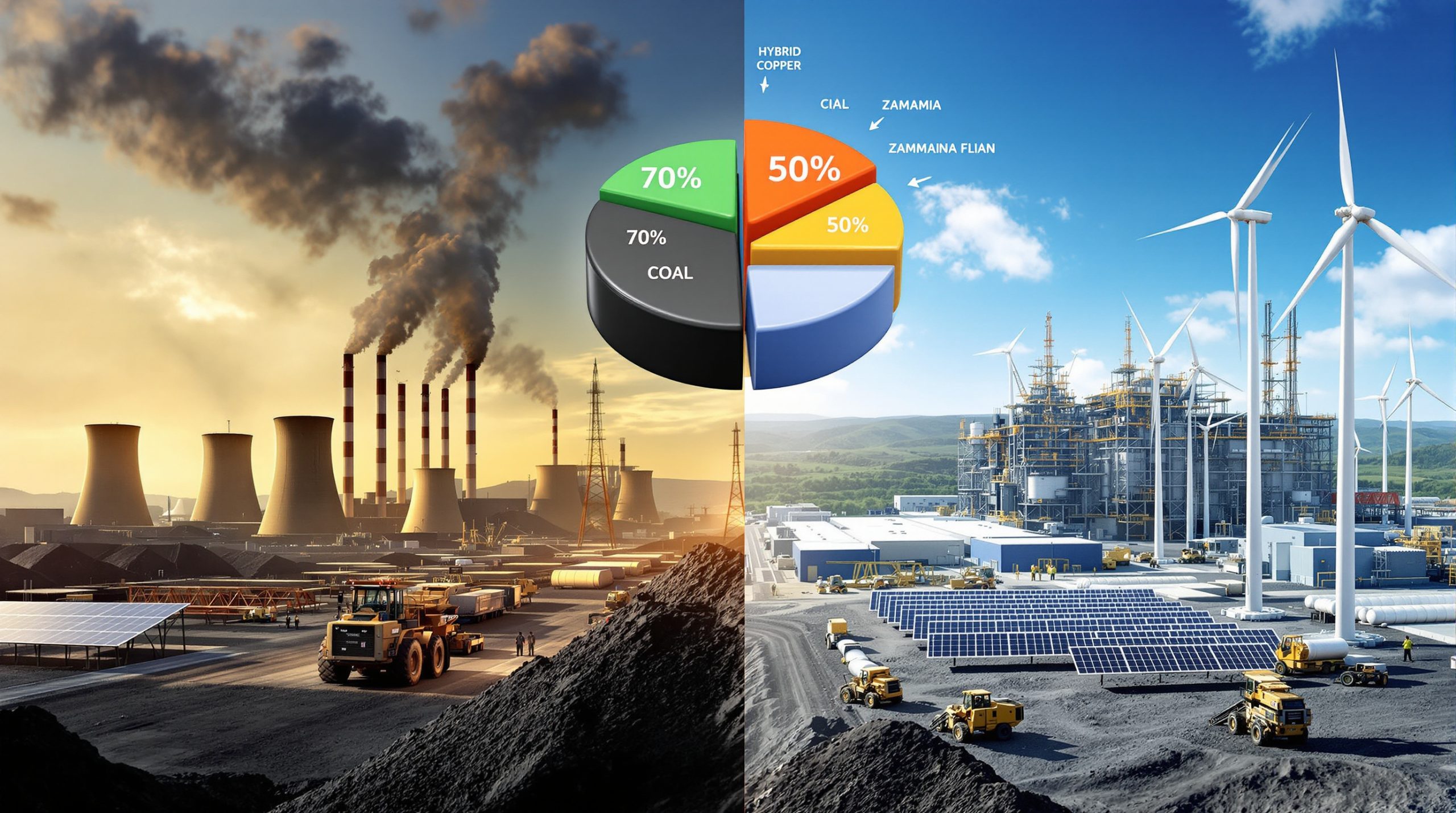Why Are Iron Ore Prices Surging Right Now?
The iron ore market has witnessed a remarkable upswing in recent weeks, driven by a combination of market sentiment factors and fundamental supply-demand dynamics. According to Shanghai Metals Market (SMM) analysis, this surge reflects broader economic shifts and targeted policy initiatives that have reinvigorated investor confidence.
Market Sentiment Driving the Rally
The June 2025 manufacturing Purchasing Managers' Index (PMI) showed notable month-over-month improvement, signaling renewed vitality in China's manufacturing sector. This positive indicator suggests sustained industrial activity, directly translating to stronger demand for steel and its primary input—iron ore.
"The improved manufacturing PMI data has provided much-needed confidence that the industrial sector is maintaining momentum despite broader economic headwinds," notes SMM's latest market analysis report from July 2025.
Government fiscal support has further bolstered market sentiment, with special-purpose bond issuance increasing significantly year-over-year during the first half of 2025. These bonds typically fund infrastructure projects—major consumers of steel products—creating a ripple effect that strengthens iron ore demand insights.
Perhaps most influential has been the new "anti-cut-throat competition" policy framework, which has sparked widespread expectations for meaningful supply-side reforms. Market participants are anticipating that the upcoming July industry meeting will introduce measures to optimize production capacity and improve market structure, potentially constraining iron ore supply while supporting price stability.
The speculative impact of these developments is evident in futures market behavior, where prices have outpaced physical spot market gains. This widening spread between futures contracts and physical transactions indicates strong speculative interest based on positive market outlook rather than immediate demand shifts.
Fundamental Supply-Demand Factors Supporting Prices
While sentiment has driven much of the rally, tangible supply-demand factors provide underlying support. Port inventory data reveals limited accumulation despite increased overseas shipments, suggesting steady consumption rates. According to SMM analysis, "The unremarkable supply-demand imbalance has limited the suppressive effect that would typically come from rising inventories."
Steel mills have maintained moderate profitability levels, enabling consistent purchasing patterns that provide baseline demand support. The slight increase in apparent steel demand—a measure of real consumption activity—further underpins this stability.
Environmental regulations have introduced production constraints, particularly affecting sintering operations in northern production hubs like Tangshan. However, these measures have had minimal impact on blast furnace operations, allowing steel output to remain relatively stable while potentially constraining the processing of lower-grade ores.
On the supply side, overseas producers have accelerated shipments to meet end-of-quarter targets, pushing export volumes higher. This short-term supply increase has been largely absorbed by the market without significant downward price pressure—a testament to the underlying strength of current demand.
Key Insight: The divergence between futures and spot prices typically indicates a market anticipating stronger fundamentals ahead rather than responding to immediate supply-demand conditions. Current premium in futures suggests traders are positioning for continued strength through Q3 2025.
How Are Price Movements Affecting Different Market Segments?
The recent iron ore prices surge has impacted various market segments differently, creating notable price divergences across imported and domestic supply chains. These variations reflect regional industrial policies, transportation factors, and quality differentials that shape local market dynamics.
Imported Iron Ore Price Dynamics
The weekly average price of Pilbara Blend (PB) fines at Shandong ports has increased by 10-15 yuan/mt week-over-week, according to SMM market monitoring. The SMM 62% Imported Ore MMi Index has similarly shown a significant upward trajectory, confirming the strength of the current rally.
Futures markets have experienced more pronounced gains than physical spot transactions, leading to an expanded spread between contract and physical prices. This divergence indicates that speculative interest and forward-looking sentiment are outpacing immediate physical demand—a classic sign of a sentiment-driven rally.
The upward momentum has shifted the price center higher across all major grade categories, with premium products maintaining their quality spreads. However, industry analysts note that the supply-demand imbalance remains relatively modest compared to historical patterns, suggesting the rally may face fundamental limitations if physical demand doesn't accelerate to match futures expectations.
Market Insight: The expanded futures-spot spread indicates strong bullish sentiment, but historically such divergences tend to normalize either through spot prices catching up or futures moderating. Traders should monitor physical transaction volumes as a reality check on futures pricing.
Domestic Iron Ore Market Response
Domestic ore markets have responded with more measured price increases, creating interesting arbitrage opportunities between imported and local supplies. In key producing regions of Hebei province, including Tangshan, Qian'an, and Qianxi, prices have risen by 5-10 yuan/mt—roughly half the increase seen in imported ores at coastal ports.
West Liaoning areas, including Chaoyang, Beipiao, and Jianping, have seen even smaller increases of just 1-5 yuan/mt, while East China prices have maintained relative stability with minimal fluctuation. This regional variation highlights the importance of local supply-demand balances and transportation costs in domestic pricing.
A particularly significant development has been the narrowing price spread between domestic and imported ores, which has improved the cost-effectiveness of local supplies. The dry-basis, tax-inclusive delivery-to-factory price for 66% grade ore in the Tangshan area currently stands at 870-880 yuan/mt, making it increasingly competitive with imported alternatives after accounting for quality differentials.
Steel mills and traders have shown improved purchasing enthusiasm for domestic ores at these more competitive price points, particularly in regions where environmental restrictions have constrained local production and tightened available resources.
What Regional Variations Exist in the Iron Ore Market?
The Chinese iron ore market exhibits significant regional differences that influence iron ore price trends and trading patterns. These variations reflect local industrial policies, resource availability, and logistical factors that create distinct market environments across key producing regions.
Hebei Province Market Conditions
As China's steel production heartland, Hebei province—particularly the Tangshan area—plays a pivotal role in setting domestic iron ore market trends. Local mine iron ore concentrate prices have remained relatively stable despite the broader market rally, supported by structural factors including resource constraints and environmental policies.
"Resource constraints at local mines and beneficiation plants have provided ongoing support for price levels, even during periods of weaker demand," observes SMM's regional market analysis.
Steel mills in Hebei have maintained moderate profit margins, supporting consistent demand for iron ore concentrates despite occasional environmental restrictions. These mills have shown improved purchasing enthusiasm when prices dip, creating a responsive price floor that prevents significant downward corrections.
Environmental protection measures have created production limitations in specific areas, particularly affecting sintering operations. However, these restrictions have had a more modest impact on blast furnace operations, allowing steel production to continue at relatively normal rates while supporting ore demand.
The dry-basis, tax-inclusive delivery-to-factory price for 66% grade ore in the Tangshan area currently stands at 870-880 yuan/mt, reflecting the premium commanded by higher-grade material in this environmentally sensitive region.
Liaoning Province Market Dynamics
West Liaoning presents a different market picture, with the wet-basis, tax-excluded ex-factory price for 66% grade ore currently at 680-685 yuan/mt. This pricing structure reflects different tax treatments and moisture content calculations compared to Hebei, making direct price comparisons challenging without standardization.
Frequent regulatory inspections have created relatively tight production resources in the region, constraining supply and supporting price levels despite buyer resistance. Steel mills in Liaoning have adopted a more cautious purchasing strategy, primarily buying based on immediate production needs rather than building significant inventories.
A notable feature of the Liaoning market has been the strong buyer pressure to negotiate lower prices, creating market tension and affecting transaction volumes. This evident tug-of-war between sellers and buyers has resulted in slower price increases compared to other regions despite similar supply constraints.
"The price negotiation dynamic in Liaoning clearly demonstrates the regional variation in market power between buyers and sellers," notes the SMM analysis. "Mills in this region exhibit stronger bargaining positions than their counterparts in Hebei."
East China Market Situation
East China presents a third distinct market environment, characterized by more stable operations and balanced supply-demand conditions. Mines and beneficiation plants in this region have been operating at normal capacity levels, with limited inventory pressure allowing standard production schedules.
The "sell as produced" approach dominates market strategy in East China, with producers maintaining steady output and selling material as it becomes available rather than accumulating significant inventories. This operational approach has contributed to price stability in the region despite the volatility seen elsewhere.
The slight week-over-week increase in the imported ore price index has begun to influence local pricing expectations, creating potential for modest price increases in the short term. However, these adjustments are expected to remain measured compared to the more volatile northern markets.
What Factors Will Influence Iron Ore Prices Next Week?
The iron ore market's near-term trajectory will be shaped by a complex interplay of supply developments, demand conditions, and broader market sentiment factors. Understanding these influences is essential for market participants navigating this volatile commodity landscape.
Supply-Side Considerations
Overseas iron ore shipments are expected to continue their rebound, driven by producers' end-of-quarter target pressures and favorable pricing incentives. This increase in seaborne supply could lead to higher port arrivals in the coming weeks, potentially creating moderate inventory buildup at major Chinese ports.
However, industry analysts note that current inventory accumulation levels are having a limited suppressive effect on prices compared to historical patterns. "The market has demonstrated remarkable absorption capacity for increased shipments, suggesting underlying demand strength despite modest inventory growth," according to SMM market intelligence.
Ongoing environmental protection measures continue to affect production in northern regions, particularly impacting sintering operations and ore processing facilities. These restrictions have helped maintain resource constraints at domestic mines, providing price support for local concentrates despite increased import volumes.
Supply Insight: Iron ore shipment scheduling tends to follow quarterly patterns, with producers accelerating volumes toward period ends to meet contracted obligations and performance targets. This cyclical pattern often creates short-term supply surges that may temporarily pressure prices before normalizing.
Demand-Side Outlook
Environmental restrictions in Tangshan and other northern production hubs are affecting sintering operations but have shown limited impact on blast furnace utilization rates. This selective constraint allows steel production to maintain relatively normal levels while potentially shifting demand toward higher-grade direct-feed ores that require less sintering.
Sustained high pig iron production, supported by moderate steel mill profit margins, continues to underpin consistent ore demand. Steel mills have maintained stable production enthusiasm despite occasional environmental restrictions, providing baseline support for iron ore consumption.
Seasonal factors are beginning to influence consumption patterns, with traditional summer construction slowdowns potentially moderating steel demand in some sectors. However, infrastructure investment supported by special-purpose bond issuance could offset some of this seasonal weakness.
The improved cost-effectiveness of domestic ores relative to imported alternatives may shift some purchasing behavior, particularly for mills with flexible procurement capabilities. This substitution effect could marginally reduce demand for imported materials while supporting domestic ore prices.
Market Sentiment and External Factors
Optimistic market sentiment continues to support speculative long positions in iron ore futures, contributing to the premium of paper markets over physical transactions. This positive outlook is based largely on expectations for policy support and supply-side reforms rather than immediate fundamental improvements.
Potential market disruptions loom as tariff negotiation deadlines approach, creating uncertainty around future trade flows and pricing structures. While the specific details remain confidential, any significant changes to the tariff regime could substantially impact relative pricing between domestic and imported ores.
The risk of tightened environmental protection policies in northern production regions remains a critical variable, particularly as air quality concerns typically intensify during summer months. New restrictions could further constrain domestic ore processing and sintering operations, potentially shifting demand toward imported materials.
The upcoming July industry meeting represents a key inflection point, with potential policy announcements that could significantly influence market expectations and price trends. Participants are watching closely for signals regarding production controls, environmental standards, and supply-side reform initiatives.
Despite these variables, the overall improved fundamentals provide baseline support for current price levels, making dramatic corrections unlikely without significant negative catalysts. The balance of supply increases against steady demand and positive sentiment suggests a potentially range-bound market with upward bias in the near term.
How Do Iron Ore Price Movements Compare Historically?
The current iron ore market dynamics present several interesting divergences from historical patterns, offering valuable context for understanding potential future trajectories. These historical comparisons provide essential perspective on market cycles, price relationships, and seasonal tendencies.
Price Spread Analysis
The relationship between domestic and imported ore prices has undergone a notable shift in recent months. The current narrowing gap between these market segments contrasts with the wider spreads observed during previous price cycles, improving the competitive position of domestic producers against seaborne suppliers.
"The convergence of domestic and imported ore prices reflects both improving quality in Chinese operations and the impact of elevated shipping costs on imported materials," explains a senior analyst at SMM Research. "This narrowing spread has historically preceded periods of greater price stability."
The cost-effectiveness of domestic ores has improved significantly relative to imported alternatives when adjusted for quality differentials. This relationship shift could potentially reduce China's import dependency if sustained, particularly for medium-grade concentrate products where quality convergence has been most pronounced.
Historical analysis of price relationships between different grade categories reveals that premium spreads typically expand during market rallies as steelmakers prioritize productivity and environmental compliance. The current modest widening of high-grade premiums aligns with this historical pattern but remains less pronounced than during previous strong bull markets.
Historical Context: During the 2021 iron ore price surge, high-grade premiums expanded to record levels as mills prioritized productivity and environmental compliance. The more modest premium expansion in the current rally suggests a different fundamental dynamic driving this price cycle.
Production and Inventory Trends
Current inventory accumulation rates at major Chinese ports remain below seasonal expectations based on five-year averages. This relatively tight inventory situation contrasts with historical patterns where strong price rallies typically coincided with declining port stocks rather than the current stable-to-slightly-increasing trend.
Production levels across different regions show interesting divergences from capacity utilization norms, particularly in environmentally sensitive areas where regulatory restrictions have created greater operational variability. The impact of environmental regulations on output has become more pronounced and regionalized compared to historical patterns where market-driven factors dominated production decisions.
Seasonal patterns in steel mill purchasing behavior suggest the current buying enthusiasm may moderate as summer progresses, based on typical cyclical demand patterns. However, the influence of government infrastructure stimulus through special-purpose bonds could disrupt this seasonal pattern, particularly if project approvals accelerate in the coming months.
Long-term supply growth trajectories from major producing regions have flattened compared to historical expansion rates, reflecting capital discipline among major miners and increasing development challenges for new projects. This structural shift suggests potential for more sustained price support compared to previous cycles where supply expansions rapidly followed price rallies.
What Should Investors and Market Participants Watch For?
Navigating the iron ore market effectively requires monitoring a range of indicators that signal potential price shifts, policy changes, and fundamental developments. Market participants should focus on these key factors to anticipate market movements and position accordingly.
Key Market Indicators to Monitor
Environmental policy developments, especially in northern production regions like Hebei and Liaoning, require close attention. Regulatory announcements from the Ministry of Ecology and Environment can trigger immediate market responses, particularly when they target steel and sintering operations during sensitive air quality periods.
The outcomes from the important July industry meeting will likely set the tone for market expectations regarding supply-side reforms and production discipline. Official communications and subsequent industry interpretation will provide critical guidance on policy direction and implementation timelines.
Changes in steel mill profitability represent a leading indicator for iron ore demand strength. Monitoring steel product margins—particularly for construction products like rebar and hot-rolled coil—provides early signals of potential shifts in iron ore purchasing power and volume requirements.
Special-purpose bond issuance rates serve as a key proxy for infrastructure stimulus intensity. The pace and direction of these issuances directly influence medium-term steel demand forecasts and, by extension, iron ore consumption expectations.
Manufacturing PMI trends offer broader context for industrial demand conditions. The sub-indices for production and new orders are particularly relevant for forecasting steel consumption across manufacturing sectors, complementing the infrastructure-focused indicators.
Monitoring Tip: The relationship between domestic scrap prices and iron ore offers an early warning system for substitution effects. When this ratio shifts significantly, it often precedes changes in blast furnace versus electric arc furnace production balances, affecting iron ore demand.
Risk Factors and Potential Market Disruptions
Tariff negotiation developments could substantially affect trade flows if significant changes emerge from ongoing discussions. While details remain confidential, the potential for adjusted tariff structures introduces uncertainty that could impact relative pricing between domestic and imported ores.
Intensification of environmental protection measures beyond current levels represents a persistent risk, particularly during summer months when air quality concerns typically heighten. New restrictions could further constrain domestic ore processing and sintering operations, potentially shifting demand toward imported materials.
Significant changes in steel demand patterns would directly impact downstream iron ore consumption. Monitoring real estate investment trends, infrastructure project starts, and manufacturing output provides early warning of potential demand shifts before they fully manifest in iron ore markets.
Supply chain disruptions from regulatory or logistical challenges remain an ever-present risk in the current global environment. Port congestion, shipping constraints, or production disruptions at major mines could quickly tighten physical supply despite apparently adequate global capacity.
Shifts in market sentiment based on macroeconomic indicators could trigger rapid repositioning by financial participants, potentially amplifying price volatility. The growing influence of futures markets and financial traders has increased the sensitivity of iron ore prices to broader economic sentiment shifts and liquidity conditions.
FAQ: Common Questions About Iron Ore Market Dynamics
What is driving the current iron ore prices surge?
The recent price rally is driven by a combination of improved manufacturing sector performance, increased government support through special-purpose bond issuance, expectations for supply-side reforms, and optimistic market sentiment ahead of important industry meetings
Ready to Capitalise on the Next Mineral Discovery?
Discover the latest ASX mineral opportunities before the wider market with Discovery Alert's proprietary Discovery IQ model, which instantly transforms complex mining data into actionable insights. Explore our dedicated discoveries page to see how historic mineral finds generated substantial returns, and begin your 30-day free trial today.




